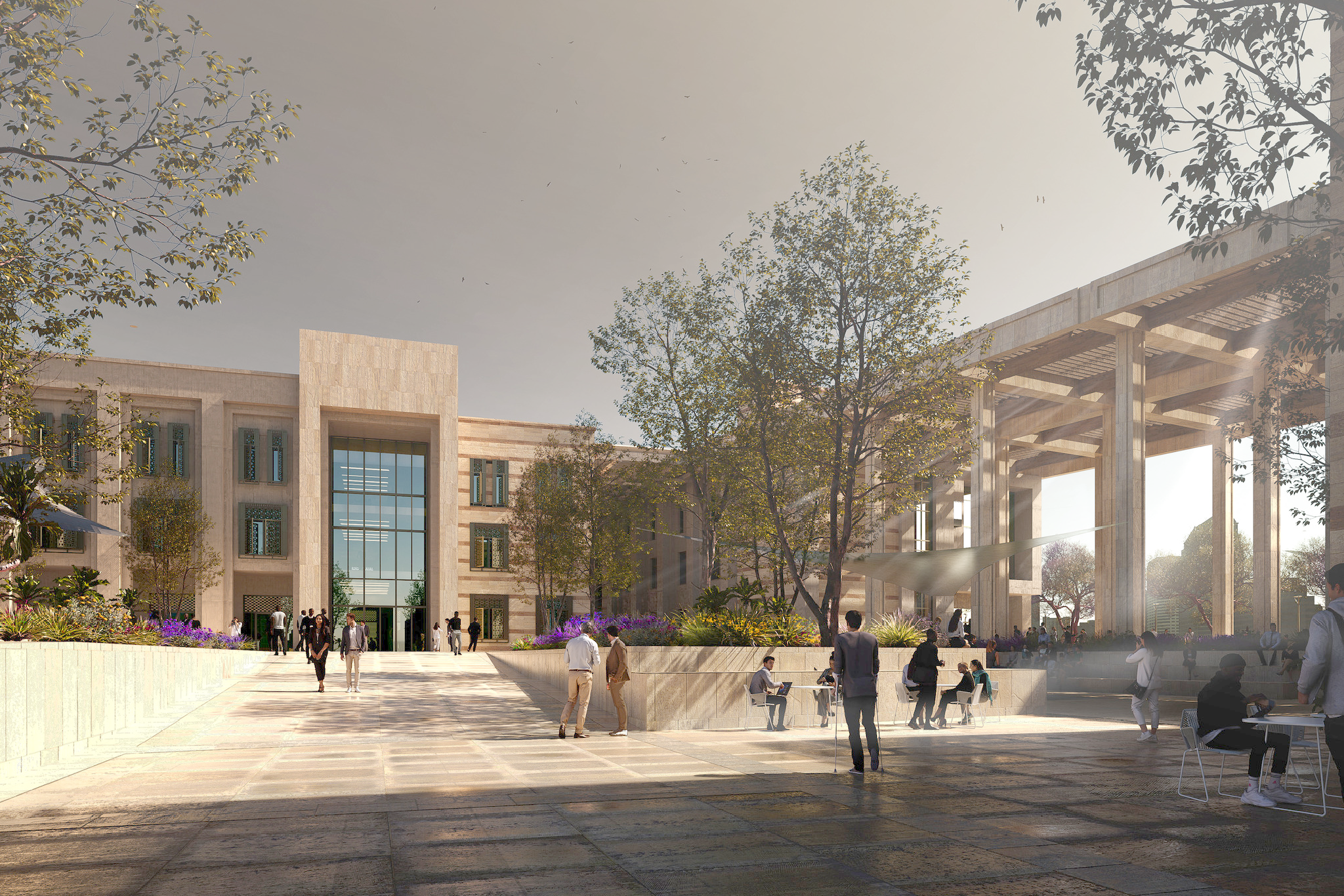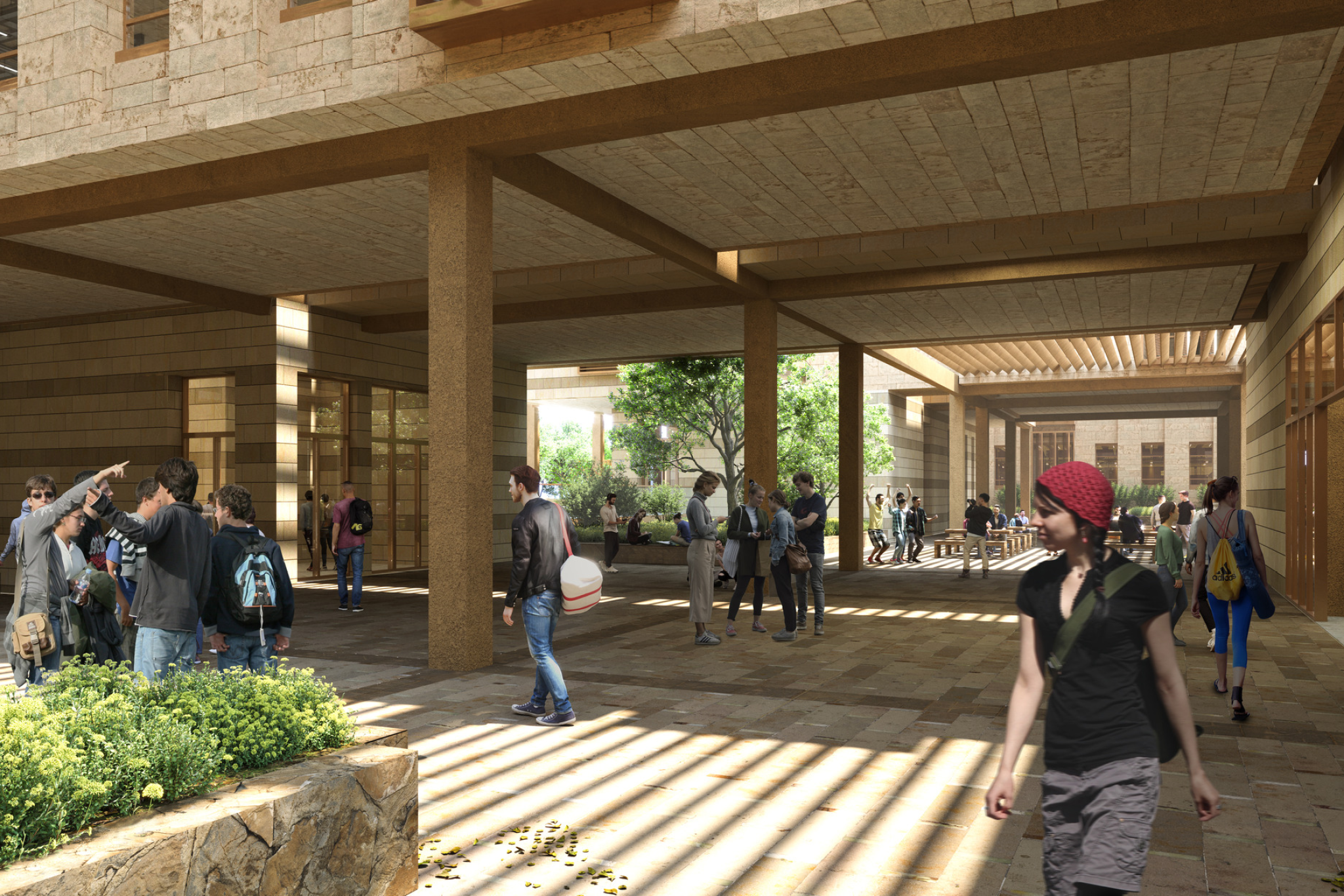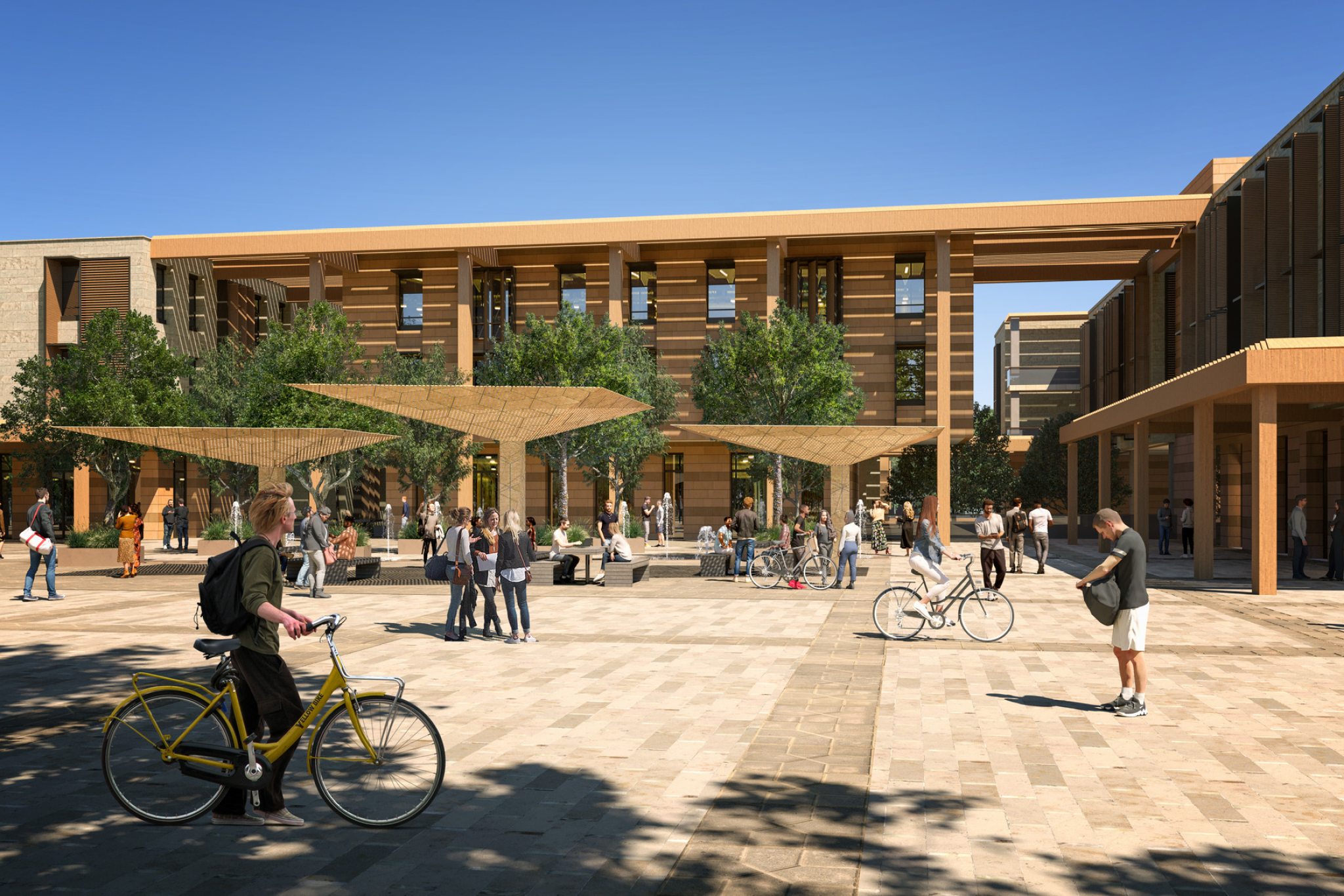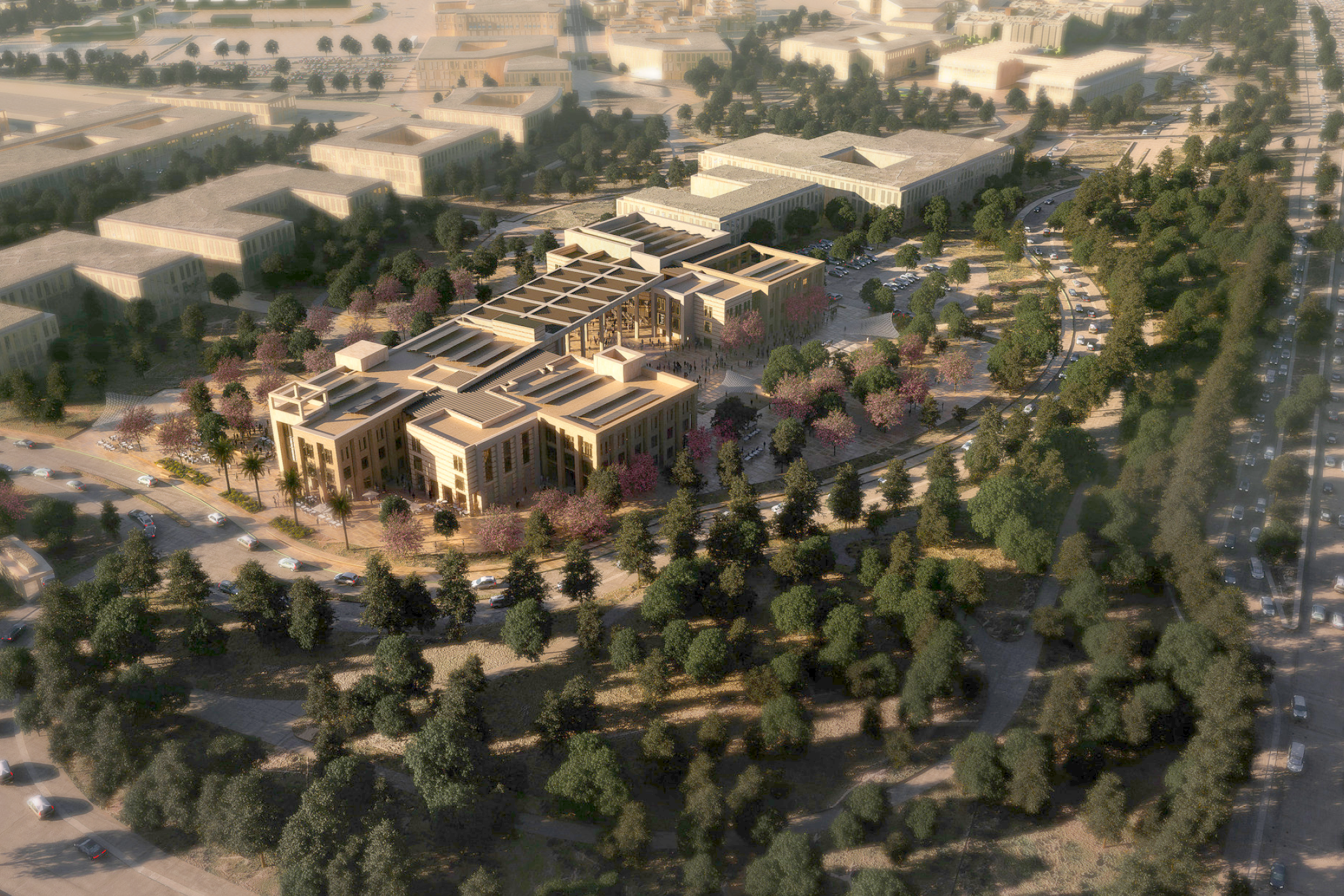In New Cairo, Egypt, The American University in Cairo (AUC) has broken ground on a roughly 270,000-sf expansion of its campus. The project encompasses two new buildings intended to enhance the physical campus and support AUC’s mission to provide top-tier education and research.
Designed by DLR Group, the AUC campus expansion project includes sustainable, state-of-the-art elements while preserving the character of the New Cairo campus.
The 146,970-sf Extended Education Hub offers classrooms, executive education areas, general spaces, and essential basement support spaces, in addition to rooftop gardens and a 450-seat auditorium. Featuring courtyards and landscaped pathways, the design aims to promote an interactive learning community, drawing inspiration from street bazaars and narrow alleys that open to larger, unexpected social spaces in Cairo.
The Extended Education Hub’s natural elements include a tranquil reflecting pool that provides evaporative cooling. Outside, trellises and canopies create designated areas for outdoor classrooms, gatherings, and leisure.
The 123,795-sf NextGen Student Living and Learning Spaces emphasize holistic student wellness and community building. It enables student connections via cafes, co-working spaces, prayer rooms, music rooms, and spacious living areas. Accommodating 300 beds, the project also features kitchens where students can cook and interact, as well as a garden-level basement. The residential interiors’ neutral palette allows students to express their personal identity through their furnishings, rugs, and art.
“Our design for two new buildings within the expanded AUC campus footprint fosters curiosity and innovative thinking within a cross-cultural environment,” Stu Rothenberger, DLR Group senior principal and global higher education leader, said in a statement. “Integrating sustainable design principles and supporting a stimulating learning environment that extends beyond the four walls of the classroom, this project will have a significant impact on the region and continue AUC’s inspiring legacy of elevating higher education in the world.”
Construction of the two university buildings is slated for completion by the end of 2026.
On the Building Team:
Owner: The American University in Cairo
Design architect: DLR Group
Architect of record, MEP engineer, and structural engineer: EHAF Consulting Engineers




Related Stories
| Oct 17, 2011
Clery Act report reveals community colleges lacking integrated mass notification systems
“Detailed Analysis of U.S. College and University Annual Clery Act Reports” study now available.
| Oct 14, 2011
University of New Mexico Science & Math Learning Center attains LEED for Schools Gold
Van H. Gilbert architects enhances sustainability credentials.
| Oct 12, 2011
Bulley & Andrews celebrates 120 years of construction
The family-owned and operated general contractor attributes this significant milestone to the strong foundation built decades ago on honesty, integrity, and service in construction.
| Sep 30, 2011
Design your own floor program
Program allows users to choose from a variety of flooring and line accent colors to create unique floor designs to complement any athletic facility.
| Sep 23, 2011
Okanagan College sets sights on Living Buildings Challenge
The Living Building Challenge requires projects to meet a stringent list of qualifications, including net-zero energy and water consumption, and address critical environmental, social and economic factors.
| Sep 14, 2011
Research shows large gap in safety focus
82% of public, private and 2-year specialized colleges and universities believe they are not very effective at managing safe and secure openings or identities.
| Sep 7, 2011
KSS Architects wins AIA NJ design award
The project was one of three to win the award in the category of Architectural/Non-Residential.
| May 18, 2011
Major Trends in University Residence Halls
They’re not ‘dorms’ anymore. Today’s collegiate housing facilities are lively, state-of-the-art, and green—and a growing sector for Building Teams to explore.
| May 18, 2011
Raphael Viñoly’s serpentine-shaped building snakes up San Francisco hillside
The hillside location for the Ray and Dagmar Dolby Regeneration Medicine building at the University of California, San Francisco, presented a challenge to the Building Team of Raphael Viñoly, SmithGroup, DPR Construction, and Forell/Elsesser Engineers. The 660-foot-long serpentine-shaped building sits on a structural framework 40 to 70 feet off the ground to accommodate the hillside’s steep 60-degree slope.
















